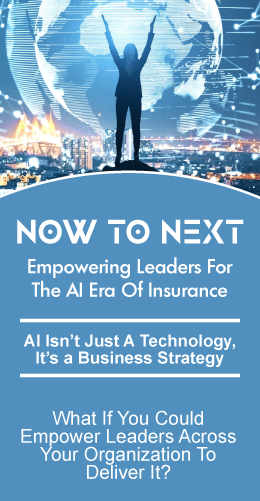
The future of insurance is well and truly here: the only way insurance carriers will be
able to survive and thrive is by utilizing big data, including new and emerging data
sources.
In an interview with Mad Money’s Jim Cramer on CNBC, Chubb Ltd.’s Chairman
and CEO Evan Greenberg commented: “We spend a billion dollars a year on
technology. We’re in a world that’s going from analog to digital…if you remain analog,
you’re history.”
Greenberg wasn’t just describing digitizing an industry that has historically adopted
technology at glacial speeds, but how harnessing big data can help insurers actively
predict and prevent loss, rather than only deal with the financial aftermath.
“Loss costs rise every year by four to six percent,” explained Greenberg. “There is always
inflation on liability, property, repairs, labor, and so on.”
This is where technology, especially AI and machine learning becomes an advantage,
not just the latest industry buzzword. Traditionally, insurance carriers use legacy data
sources across all lines of business and some, like Chubb, are using new and
alternative data sources to alleviate systemic problems. These alternative data sources
include social media and publicly available online data and have been proven to
mitigate loss cost, among many other benefits.
In the interview, Greenberg specifically mentions claims and underwriting as areas to
better serve their clients. For example, the existing process for pricing, quoting, and
underwriting small and medium-sized businesses is predominantly manual, time-
consuming, expensive, and not ideal for the carrier or consumer.
“Right now, if you’re a small business, to underwrite you we ask you about 30
questions. For Chubb, over the next 18 months, that’ll come down to about seven
questions, because we can just scrape the answers from data that is publicly available.
[We] don’t need to bother you with that,” he told Cramer.
By using this type of new and emerging data, carriers can complete the picture of new
business and streamline their intake process by prefilling profile data and standard
eligibility questions with validated data. But why would a carrier only evaluate the
business once during the policy’s lifetime?
“Until now, carriers have looked at data at a single point in time, at the underwriting
stage or the first notice of loss or injury,” says Max Drucker, CEO, and Co-founder of
Carpe Data. “But now we live in a world where data can be accessed continuously, it’s
fluid—data is a stream. So we can see when business is offering a new service, or
when an apartment building added a pool as it happens, rather than waiting for the next,
undetermined point of time when a carrier may check a database.”
An insurer monitoring emerging data sources can see changes as they occur, giving
them the potential to react sooner to both risks and opportunities, like monitoring
business performance and reacting to material changes that either create new risk or
change eligibility.
Other ways that a carrier can see immediate benefits include being able to act quickly
on inaccurate or missed data that would have been too difficult to discover without
consistent data monitoring, or easing the intake of new business with better pre-fill and
eligibility checks. For instance, a beauty salon adding waxing services, or a cafe that
upgraded their alcohol license from beer and wine to add liquor are scenarios that
create potential upsell opportunities and valid touchpoints for agents with their clients.
In short, a matched business in the hands of an agent together with a detailed picture of
risk is a very compelling sales scenario.
“In the small space of time that these alternative data sources have been available to
carriers, they can now be at the forefront of this evolution by having the ability to
continuously monitor their policies with real-time data, across their entire book,” explains
Drucker.
Being able to underwrite with more than a static picture results in a true return on
investment for carriers, with prevented claims, opportunities to upsell, reduced premium
leakage, and overall processing efficiency.
Get all of your insurtech news and insights on the SVIA Blog.








